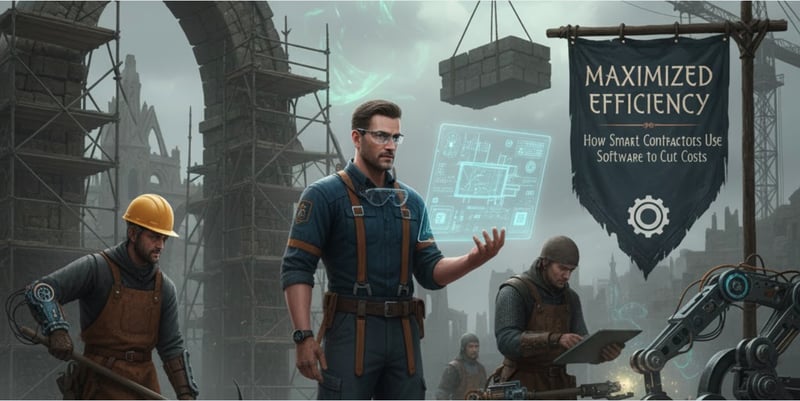Why Projects Fall Apart and How Contractors Stay on Track
 By
Cameron Renaud
·
2 minute read
By
Cameron Renaud
·
2 minute read

Running a construction project can feel like juggling hammers, lumber, and deadlines while blindfolded. One small mistake can snowball into missed deadlines, frustrated clients, and wasted materials. Every contractor has been there: a job that started strong suddenly spirals out of control. But why does this happen so often, and more importantly, how do top crews avoid it?
The answer may surprise you. Most projects fail not because of weather, difficult clients, or even lack of skilled labor. The main culprit is poor communication and lack of organized workflows.
Why Communication Breakdowns Are the Silent Killer
Think about your last project. How many times did someone ask the same question twice? How often did a miscommunication cause a delay or double work?
Construction projects involve dozens of moving parts: subcontractors, materials, inspections, and crew schedules. If even one piece of information gets lost or delayed, the whole job slows down.
For example, a simple issue like a crew not knowing the updated blueprint can cost hours of work. Multiply that across multiple crews and multiple trades, and suddenly the timeline slips, frustration grows, and mistakes multiply.
Common Signs a Project Is Slipping
Before a project completely falls apart, there are usually warning signs you can spot:
-
Conflicting instructions: Different team members receive different directions on the same task.
-
Missed deadlines: Small delays start stacking up, and no one knows the real impact on the schedule.
-
Untracked materials: Equipment or materials go missing, creating downtime.
-
Constant firefighting: You spend more time solving problems than planning and building.
Recognizing these signs early is key. Smart contractors don’t wait for chaos to hit—they implement systems to prevent it.
How Top Contractors Keep Jobs Running Smoothly
The most successful contractors have three things in common: clear communication, organized workflows, and real-time visibility. Here’s how you can do it too.
1. Centralize Your Project Information
Stop relying on text messages, emails, and sticky notes. When instructions, schedules, and documents live in different places, information gets lost.
Top contractors keep everything in one centralized platform where everyone—crew, subcontractors, and project managers—can access the latest updates instantly.
2. Standardize Your Workflows
Every crew member should know the steps for every task, from safety checks to material orders. By standardizing workflows, you reduce mistakes, increase efficiency, and give new team members an easy way to get up to speed.
3. Track Progress in Real Time
Waiting until the end of the day to hear about delays is too late. Real-time tracking ensures that problems are spotted immediately, allowing you to adjust schedules or resources before small issues become big headaches.
4. Document Everything
Photos, notes, and reports aren’t just busywork—they are proof of progress, help resolve disputes, and keep clients in the loop. Smart contractors document as they go instead of trying to remember details at the end of the week.
5. Make Accountability Clear
Everyone on the job site should know their responsibilities and deadlines. When accountability is visible and tracked, tasks get done faster and mistakes are caught before they escalate.
Why Software Makes All the Difference
All of these best practices—centralized info, standardized workflows, real-time tracking, documentation, accountability—sound simple, but managing them manually is nearly impossible on modern jobsites. That’s where operations software like Tradetraks comes in.
With Tradetraks, contractors can:
-
Keep all project documents, schedules, and communications in one place
-
Track crew tasks, materials, and deadlines in real time
-
Automate onboarding for new team members
-
Reduce errors and miscommunications before they happen
Smart contractors aren’t just working harder—they’re working smarter. Tools like Tradetraks make it easy to implement the strategies top-performing crews use every day.
Final Thoughts
Projects fall apart for one main reason: information and workflow chaos. The contractors who stay on top of their projects are the ones who make communication, organization, and tracking non-negotiable.
By centralizing your information, standardizing your processes, and using modern tools to track progress, you can keep every project on schedule, every client happy, and every crew member productive.
If you want to see how this works in real life, check out Tradetraks, the operations platform designed for contractors who want jobs to run smoothly from start to finish.
Ready to keep track of your business from the beach?
Visit www.tradetraks.ca to see how trades companies are cutting costs, streamlining operations, and taking control of their future.
